

Why I Chose This Topic. Untitled. Regio-DB2-800. Untitled. Untitled. Untitled. Just Trains - Diesel Locomotives. End of line for diesel trains. Some of Britain's most popular rail lines are to be electrified as part of a £1.1bn project to modernise the network, shunt diesel trains into sidings and help lower carbon emissions, the Government will announce today.
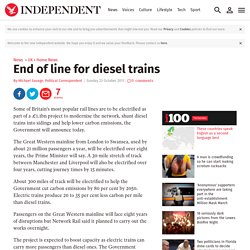
The Great Western mainline from London to Swansea, used by about 21 million passengers a year, will be electrified over eight years, the Prime Minister will say. A 30-mile stretch of track between Manchester and Liverpool will also be electrified over four years, cutting journey times by 15 minutes. About 300 miles of track will be electrified to help the Government cut carbon emissions by 80 per cent by 2050. Diesel Locomotive Technology. Contents The Diesel Locomotive - The Diesel Engine - Diesel Engine Types - Size Does Count - To V or not to V - Tractive Effort, Pull and Power - Starting - Governor - Fuel Injection - Fuel Control - Engine Control Development - Power Control - Cooling - Lubrication - Transmission - Parts of a Diesel-Electric Locomotive - Mechanical Transmission - Hydraulic Transmission - Wheel Slip - DMUs - More Information (Links).
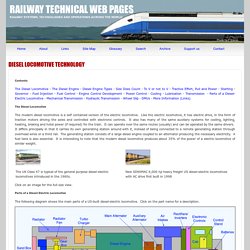
The Diesel Locomotive The modern diesel locomotive is a self contained version of the electric locomotive. Like the electric locomotive, it has electric drive, in the form of traction motors driving the axles and controlled with electronic controls. Diesel locomotive - Locomotive Wiki, about all things locomotive! - Wikia. Diesel locomotives (or "diesel engines") are locomotives that are propelled by a diesel engine(s).
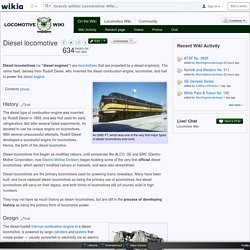
The name itself, derives from Rudolf Diesel, who invented the diesel combustion-engine, locomotive, and fuel to power the diesel engine. History Edit The diesel type of combustion-engine was invented by Rudolf Diesel in 1893, and was first used for early refrigerators. Why Hybrid? Why Diesel? - How Diesel Locomotives Work. The main reason why diesel locomotives are hybrid is because this eliminates the need for a mechanical transmission, as found in cars.
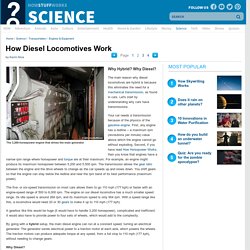
Let's start by understanding why cars have transmissions. Your car needs a transmission because of the physics of the gasoline engine. First, any engine has a redline -- a maximum rpm (revolutions per minute) value above which the engine cannot go without exploding. Steam locomotive. Steam locomotives were first developed in Great Britain during the early 19th century and dominated railway transport until the middle of the 20th century.

From the early 1900s they were gradually superseded by electric and diesel locomotives. Origins[edit] Stephenson's Rocket 1829, the winner of the Rainhill Trials United Kingdom[edit] How Steam Trains Work - Peter's Railway - Steam Locomotives. The five hardback books contain loads of information on how trains work.
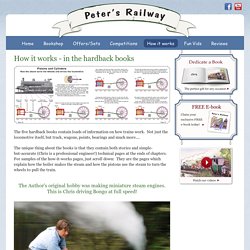
Not just the locomotive itself, but track, wagons, points, bearings and much more.... The unique thing about the books is that they contain both stories and simple-but-accurate (Chris is a professional engineer!) Technical pages at the ends of chapters. The Western Maryland Scenic Railroad. A variety of seating options are available on our daytime scenic excursions!

Standard Coach and Premium Coach are offered every scheduled operating day; Parlor and First Class begin on June 20. Learn more about our four classes of service below: Standard Coach is available every day. Train Routes. How the Shinkansen bullet train made Tokyo into the monster it is today. At 10am on 1 October 1964, with less than a week and a half to go before the start of the Tokyo Olympic Games, the two inaugural Hikari Super Express Shinkansen, or “bullet trains,” arrived at their destinations, Tokyo and Osaka.
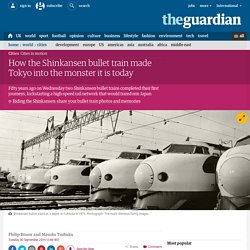
They were precisely on time. Hundreds of people had waited overnight in each terminal to witness this historic event, which, like the Olympics, heralded not just Japan’s recovery from the destruction of the second world war, but the beginning of what would be Japan’s stratospheric rise as an economic superpower. The journey between Japan’s two biggest cities by train had previously taken close to seven hours.